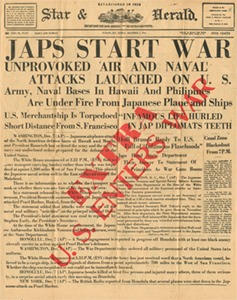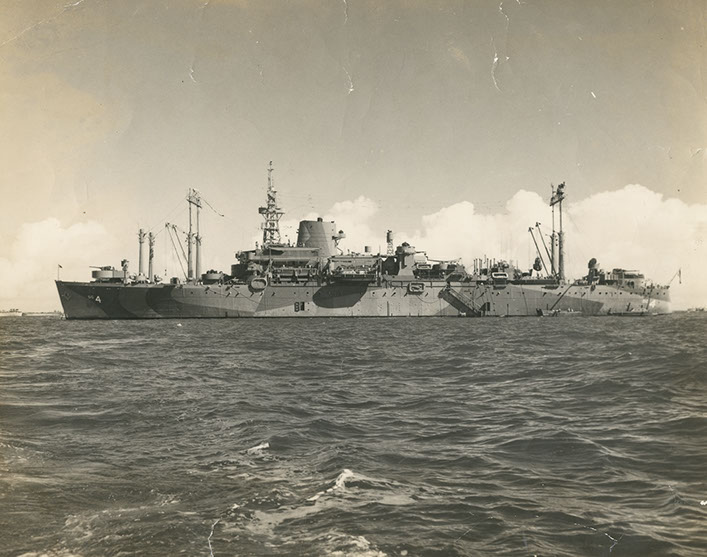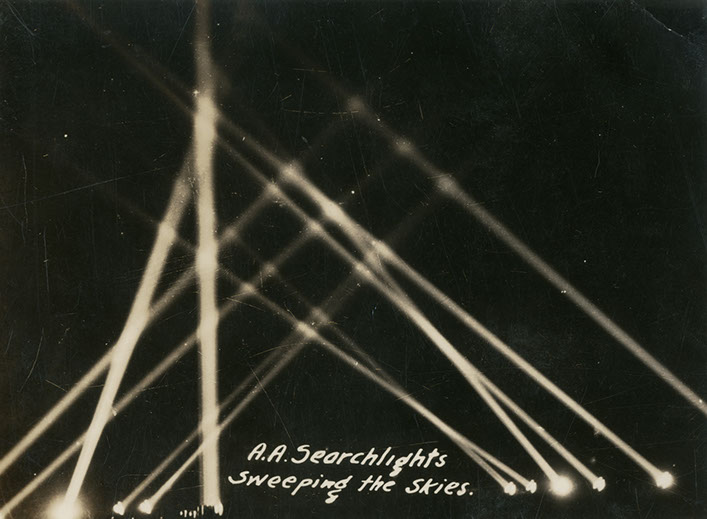Threat to the Lifeline
Even before the U.S. entered the war, a threat to the Canal was anticipated and the United States negotiated with the Republic of Panama to lease and build defense sites around the country. Service men mobilized to U.S. bases around the Canal Zone and built tactical defenses.
Click to View Slide show
Defense
The greatest threat to the Canal was an attack on the locks by aerial or long-range bombers. Should this occur, it would shut down the passageway and halt international shipping. Large anti-aircraft guns were installed to shoot down attacking enemies while barrage balloons obscured vulnerable sites.
Cargo and passenger ships that previously brought civilians to and from the Canal were converted to transport troops. Mandated blackouts darkened military bases and residential areas as beams of searchlights pierced the sky.
This online exhibition is based on the exhibition of the same name that was presented at the University of Florida George A. Smathers Libraries, March 7, 2020 - February 26, 2021.
Curated by Elizabeth A. Bouton with assistance from Elizabeth Bemis | Online design by Elizabeth A. Bouton
Student assistant curators: Summer Bias, Coral Dixon, Sean O’Dwyer, and Anna L. Weissman | Title design and other materials by Olivia Bowman
This exhibit was developed spring 2019 as part of the graduate Exhibitions Seminar in Museum Studies taught by Lourdes Santamaría-Wheeler. It was driven by student inquiry and has been an experiment in collaborative exhibition development processes.
Unless otherwise noted, all items are from the Panama Canal Museum Collection, Special & Area Studies Collections, George A. Smathers Libraries, University of Florida.








